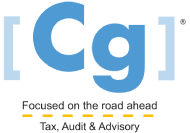
“Uniform Administrative Requirements, Cost Principles, and Audit Requirements for Federal Awards” (Uniform Guidance) applies to all nonprofits that accept federal funding. It has been updated and amended several times, most recently in 2020. So if you haven’t reviewed your own organization’s procurement policies lately, now’s a good time to ensure you’re in compliance.
Pay attention to amounts
Uniform Guidance imposes some strict purchasing requirements on nonprofits receiving federal funds. For example, you must pay attention to the amount of a purchase because it determines the procurement methods you need to employ. “Micro-purchases” of supplies or services up to $10,000 generally can be awarded without soliciting competitive quotes. But under the 2020 changes the threshold can be increased to $50,000 — and even over that amount in certain circumstances. For procurements up to $250,000 you can use the “simple acquisition” method of comparing price or rate quotes from qualified vendors.
For purchases exceeding $250,000, you must select vendors or suppliers based on publicly solicited sealed bids or competitive proposals. Select the lowest bid or the proposal most advantageous to the relevant program based on price and other factors that impact the program performance. Also perform a cost or price analysis for every purchase over $250,000, to make independent estimates before receiving bids or proposals.
Noncompetitive proposals solicited from a single source are permissible in limited circumstances. For example, they’re allowed in the event of a public emergency where the nonprofit must respond immediately.
Multiple requirements apply
Some nonprofits have found the standards challenging. Barriers to full compliance may include staff resistance or lack of time. The standards also have multiple documentation requirements.
For example, your organization must document all procurement procedures in writing. Conflict of interest policies covering employees involved in procurement as well as all entities owned by or considered “related” to your organization need to be included. And you must keep records detailing each procurement — including bids solicited, selection criteria, quotes from vendors, and the final contract price. Designing a checklist that outlines the decisions needed at each purchase level may make the process more manageable.
Compliance is critical
What might happen if you fail to fully comply with the Uniform Guidance? In extreme circumstances, you could lose your funding. Reduce this risk by regularly auditing your new procedures and processes. Contact Cg Tax, Audit & Advisory for help. © 2021

